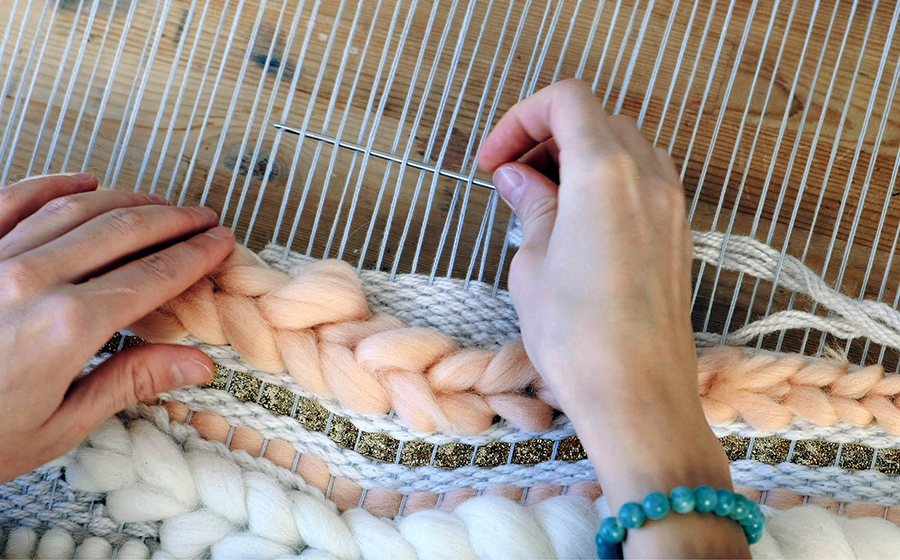Artisans are uniquely positioned to benefit from the new retail model. Artisan-made products fill a void in the retail industry that many brands no longer can. They do this by using top-tier materials, focusing on craftsmanship, and building shareable brand stories via social media. Both mid-grade and luxury retail stalwarts are losing sales to custom-crafted upstarts. The United Nations Conference on Trade and Development reports that the global artisan market currently generates around $34 billion a year, and the demand for handcrafted luxuries will only continue to grow in the years that come. As you might expect, artisan-made products are giving luxury retailers a run for their market share (Denise Restauri wrote on this topic for Forbes in 2015).
Traditional department stores will need to adopt alternative retail models – such as artisan-made products – to stay alive and relevant. This isn\’t just a department store issue, and it\’s not just a luxury issue–artisan-made products run the gamut in terms of pricing, and reflect the modern consumers\’ propensity to buy fewer, higher quality items (as the world recovers from the feeding frenzy that was the fast-fashion craze). Soon, artisan-made goods will be sold alongside–if not instead of–mass-produced inventory. And savvy department stores will need to find ways to incorporate artisan-made goods into their inventory assortments to retain customer interest and recruit next-gen consumers.
Third-Party Selling Platforms Are Top Performers
When it comes to giving legacy retailers some well-deserved competition, don\’t underestimate third-party selling platforms. Sites such as Etsy, Faire Wholesale, and yes, even Amazon, generate revenue by connecting makers with consumers. Third-party selling platforms such as these are exploding in sales volume: Etsy sales grew by nearly 19 percent in the most recent quarter and are expected to increase up to 21 percent in 2019. And Etsy\’s revenue? It is expected to jump as much as 32 percent this year. Faire Wholesale has achieved similar success, and now has over 40,000 stores actively buying on the platform. For context, that\’s more retail locations than Walgreens, Walmart, Sephora, and Nordstrom combined.
And even Amazon isn\’t the antagonist in this story. Amazon Handmade has helped contribute to the growth of the artisan movement, creating a virtual marketplace on the world\’s largest marketplace, where shoppers have access to small-batch products from all around the world. No longer do artisans need to compete with one another for their products to be picked up by Walmart or Target to just to get monied eyes on their goods. Instead, modern makers just buff up their Instagram profiles and type up a strong mission statement, then begin connecting directly with their target consumers through third-party marketplaces like Etsy and Amazon Handmade.
Global Collaborations with a Story
Although Target isn\’t the only avenue for international sellers to get their products in front of an audience with disposable income, Target does give us a great example of how department store retailers can benefit from the artisan movement. The company is a best-in-class example of how to generate positive brand perception with cross-generational consumers. Target works with the Nest platform to identify partnerships with artisans and makers from around the world. Working with artisans on Nest gives Target the ability to create unique product showcases and online storytelling content such as Meet the Makers, to help Target create stronger personal connections with its audience by identifying it as a leader in ethical sourcing.
Target\’s sustainability initiatives are as extensive as they are publicized. The retailer works with EcoSet, \”a small team of do-gooders whose sole purpose is to think about the environmental impact,\” on all of its marketing initiatives. According to the department store\’s website, the collaboration with EcoSet has helped Target\’s production team divert over 1,000 tons of trash from landfills in the past decade, which is exactly the type of numbers that Gen Z and millennial customers want to see when purchasing a product from a well-known department store.
Sourcing from Within the Community for In-Store Events
Consumers expect a lot from modern department stores. Beyond wanting brands to feature the work of global artisans (with the underlying, feel-good goal of funneling resources into third-world communities), consumers also want retailers to engage and enrich the local communities where they have physical stores. To remain relevant, department stores need to work hand-in-hand with small business owners by giving local artisans a forum to showcase and sell their work. West Elm does an outstanding job of this. West Elm LOCAL showcases work from artisans at 100 stores, featuring over 8,000 products from 900+ makers that use local materials to craft their products. Additionally, the retailer consistently churns out events, classes, and \”maker meetups\” to engage individuals within each community.
West Elm\’s community-oriented blogs include Spotify playlists curated by local musicians, maps and tours of must-see destinations in various locales, recipes native to the region and the season, and photos of local home makeovers (done with West Elm merchandise, of course). It seems like West Elm has cracked the code in terms of community engagement, but the good news is that their strategy isn\’t rocket science to replicate. Retailers can find strong brand advocates from within their community by working with local makers. Business owners can do this by adding an artisan application page to their website and putting someone from each branch in charge of discovering local talent. Writers and photographers are always looking to form creative partnerships with well-known brands, so recruiting them is a cinch with a strong payoff in community engagement. By taking full advantage of local job boards and scouring social media for available talent, retailers can find the right local creatives to make their store location(s) a success.
Unique Products with Distinctive Narratives
The bad news for retailers is that brand names have begun to lose their meaning. The good news is that they can be one of the first to begin ride the economic tidal wave by stocking an assortment of artisan-made merchandise. For the consumers, however, it\’s all about the products. Quality stands out in a diluted retail marketplace that\’s overrun with poorly made, fast-fashion goods (that often don name brands designed to make customers think it\’s the good stuff). Artisans offer the quality of luxury goods at a fraction of the price, which is why artisan-made goods are set to replace–or at the very least, complement– traditional methods of product sourcing in the years that come. And with wholesale brand partnership platforms like BuildaNest.org, it\’s never been easier for large corporations to connect with talented artisans from around the world.




